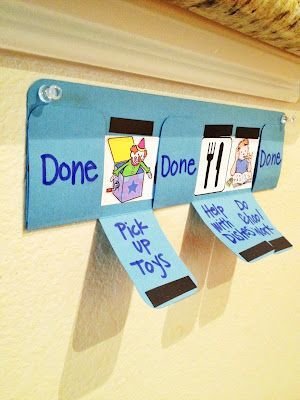Hi, I'm @roseri, welcome to my blog: #maternidadwithpurpose
A SPACE WITH CREATIVE RESOURCES FOR MOTHERS, PARENTS AND EDUCATIONAL PERSONNEL TO ENJOY TIME OF QUALITY WITH THEIR CHILDREN AND THEIR STUDENTS.
The child runs in the park, goes up and down the slider, plays all the time and does not even sit down to eat.

SOURCE
After a day full of activities, imagine that your child will come home, bathe and sleep. Than nothing! He still has the energy to do the trampoline, run around the house like a sprinter and sing and dance with a breath of envy to any professional. Phew! Sometimes, it makes you want to ask: "Where is the turn off button for that child?"
The smallest are inexhaustible sources of energy. However, some seem to have an extra dose of energy, being constantly agitated. They can not sit around for a long time; if they are sitting, they usually move their feet and hands without stopping; they feel difficulty waiting; speak loudly, run and jump too much in inappropriate places ... In cases like these, remember, patience is the key.
How to help our children channel their energy in a positive way.
1. When giving an order. First of all, help your little one to calm the body. Have a face-to-face conversation with your child, so that your attention, in fact, is directed to you.
2. Routine. The routine is important for any child. Knowing what your activities will be during the day reduces the level of anxiety and stress. Therefore, it is important to have a routine and involve the child in that process. One suggestion is to create a framework with the daily routine in a visible place for the little ones. Use visual resources to help you identify yourself and get more involved with tasks.
3. Set limits and rules. It is important that the child knows that the parents are in charge. This conveys security. It makes clear what are the limits and rules, that is, what can and what can not be done. Be patient, because the repetition of such limits is part of the process of education. For example, if you avoid taking your child to the park because after he gives a "show" to leave, talk to him. Remember what the rules are before leaving home. When you arrive at the place, you reinforce the rule.
If it is really necessary, during the game, reinforce the rule again, and so on. If your child does not respect the rule in any way, apply the discipline that was previously combined. Finally, there is no need to repeatedly shout or repeat your child's mistake.
4. At the time of the study. Minimize distractions. At home, have a space to study with few stimuli. Avoid a lot of noise, colors, and objects in the environment. It is important that space is aired and illuminated. Leave on the table only books and school materials that will be used for that activity, thus avoiding distractions. The same suggestion applies to the time of reading aloud.

SOURCE
5. Pauses. During the study session, take a few pauses that allow the child to discharge the contained energy. During that period, opt for activities that demand movement. This done, give your little ones a few minutes to slow down and then return to the studio.
6. Exercise patience. Most children always seem to prefer running instead of walking and usually do not have much patience to wait. However, it is good to teach them that waiting is important. Do it on a day to day basis. When your child interrupts a conversation, say that he needs to wait for his turn to speak. The collective jokes are also optimal for that: everyone needs to wait their turn to play, to jump yellow, to play the ball, etc. If he talks too fast, ask to breathe deeply, and then start all over again. Practice games and activities that exercise patience and self-control.

SOURCE
7. Movement. In the same way that agitated children need activities that help to relax, it is important to place physical activity in your routine. Look for a sport your child likes or make daily visits to the park. Sports practice is a fundamental tool for children to download their energies, get to know their body and learn to master it, as well as an essential tool for a good cognitive development.
8. Learn new things. Take advantage of your child's excess energy to teach a new task or activity. Make him feel useful. At home, for example, ask for help in housework, organizing the house, cleaning or even cooking, always remembering to offer an activity that he is able to complete.
If you also need a way to calm children down so they can concentrate better on an activity or task or just to relax more and fall asleep, try the following:
- Manual activities such as embroidery, crochet or line.
- Practical activities of life (visit my publication about: Calm your Children: 3 Practical Life Activities)
- Assemble a puzzle.
- Play with putty.
- Play with magic sand
- Make a mosaic
- Paint with gouache or watercolor.
- Make a collage with magazines and colored papers.
- Draw a free drawing or color a drawing.
- Look at the photo album.
- Listen to soft and quiet songs like songs, some traditional and popular songs,
- Gregorian chant and some classical compositions.
Source of information:
- https://eleospsychologycentermn.com/family-activities-fun-relaxing/
-
https://fit.webmd.com/kids/recharge/slideshow/slideshow-kids-relax

Posted from my blog with SteemPress : http://roseri.vornix.blog/2018/08/23/discover-some-ways-to-calm-a-child-without-resorting-to-television-or-mobile/



Thank you for your advice, useful ones